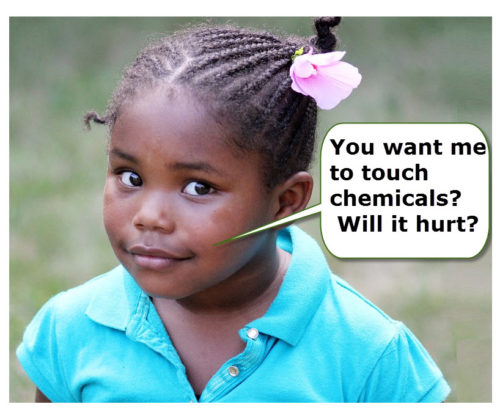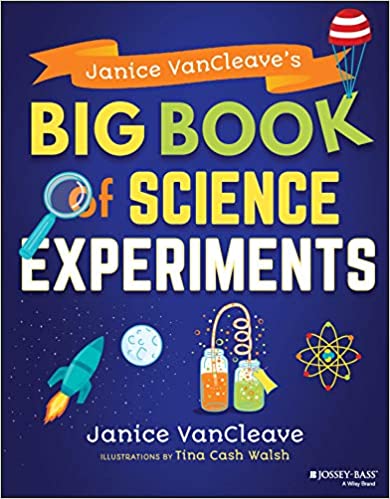 Let’s Use Our Hands to make a Chemical Mixture
Let’s Use Our Hands to make a Chemical Mixture
Homemade play dough is a great science experiment for young learners. But, more than learning about chemistry, this play dough activity connects to other curriculum, including math and art. But one of the best parts is that it is FUN! Even adults will want to get their hands in this chemical mixture.
Each of the 101 chemistry experiments has a purpose, list of materials, step-by-step instructions and illustrations, expected results, and a science explanation in understandable terms.
Did You Know!
Everything you eat is made up of chemicals. Everything you wear, even the air you breath is made up of chemicals.
The term chemical has become associated with things that are bad, things that pollute, things that are dangerous. Yes! Pollutants are made of chemicals, but so is the yummy ice cream that you eat.
Yes! Some chemicals are dangerous, such as the acid that is in the battery of most vehicles. But, not all acids are dangerous. Pickles are made by putting cucumbers in a solution made with acetic acid, which is vinegar. Lemons and other citric fruit, including grapefruit and oranges contain citric acid.
Matter is composed of chemicals. Everything composed of matter has physical properties. Physical properties of matter can be observed and measured. You use your five senses to observe the physical properties of matter. These senses are, taste, smell, touch, sight, hearing. In the Play Doh activity, you will not be using your sense of taste, smell or hearing, but will use your sense of touch, sight, and smell.
With this said, its time to introduce a bit of Kitchen Chemistry. This means materials normally found in a kitchen will be used. While the chemical mixture is not toxic, it should not be eaten for several reasons: (1) There is too much salt in it; (2) The procedure doesn’t require clean hands.
Homemade Play Doh
Materials:
1 cup flour
1/2 cup salt
large mixing bowl
Note: 1 tb of Alum, borax or cream of tartar can be added as a preservative. This is not necessary as long as you keep the dough in a sealed container and store it in the refrigerator.
1 cup water
1 tablespoon cooking oil
cooking pot and stove or an electric water pot
mixing spoon
Let kids do the measuring.
1. Measure 1 cup of flour.While in the measuring cup, ask kids to describe the physical properties of the flour, then pour the flour into the large bowl.
- What does the flour look like? [color – white; state of matter-powder (a ground up solid); volume=1 cup]
- How does the flour feel? [It feels smooth, kinda slick.]
2. Measure 1/2 cup of table salt. While in the measuring cup, describe the physical properties of the salt, and then pour the salt in the bowl with the flour.
- What does the salt look like? [color-translucent, white; shape – some cubic crystals, some crystals with flat sides; volume =1/2 cup]
- How does the salt feel? [It feels rough, grainy.]
3. Kids can use their hands to thoroughly mix the flour and salt in the bowl.
4. Adult Step: Combine 1 cup of water and 1 tablespoon of cooking oil in a sauce pan, then heat to boiling.
FYI: I use a small electric water pot. This allows me to easily heat the water without using a stove. I have made many batches of play dough by pouring hot water into the flour-salt mixture.
- What does the oil and water mixture look like? [color- water is transparent and clear, oil is pale yellow; state of matter- both are liquids; Oil floats on top of the water; volume = 1 tb oil and 1 cup water]
- How does the water and oil mixture feel? [water feels wet and oil feels slick]
5. Adult Step: Slowly pour a small amount of the heated water and oil into the bowl with the flour mixture, stirring constantly. You want the flour-salt mixture to form a thick dough.
Note: If the dough is too sticky, dust it with flour. If the dough is too dry, spray it with a mist of cool tap water.
- What does the dough look like? [color-white; state of matter-solid; volume = ? Put the dough in a measuring cup –Is the volume of the dough ball equal to the sum of the volumes of all the ingredients?
Add Color
6. If you want to color the dough. Make sure the dough is not too hot, then divide the dough into orange-size balls. Add 2 to 3 drops of food coloring to each ball. Knead the balls to mix the coloring. For more intense color, add more food coloring. Kids love doing this part.
Note: Yes the food coloring will stain your skin, but it is not permanent. It is more difficult to remove around the cuticle of your fingernails.
2. If you want to add the sense of smell to your list of physical properties, add a drop of vanilla or other food flavoring, such as mint, orange, or coconut.
Playdoh and Electricity
The salt in the play doh makes it a conductor of electricity.
How to Store!
When not being used, the dough can be stored in a resealable plastic bag or plastic storage container with a lid. I do suggest that the dough not be kept too long because it gets dirty and is a good place for germs to hide and grow. Discard in the trash.
Big Book of Science Experiments
A book of fun informative experiments about astronomy, biology, chemistry, earth science, and physics.
(Paid Link)

